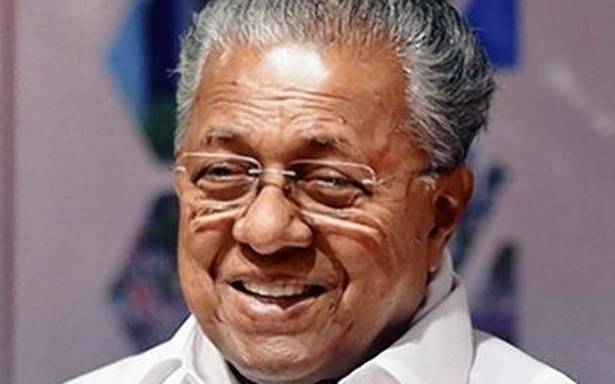Today’s meeting, to be helmed by the Chief Minister, will discuss impending third wave and the perils of stringent curbs
A high-level meeting chaired by Chief Minister Pinarayi Vijayan on June 14 will weigh the benefits against the risks of further relaxing the COVID-19 lockdown regulations.
An official said the perceived risks included the growing fear about an impending third wave, the seemingly unrelenting test positivity rate, and the possibility of a dangerous slide to complacency.
On Monday, Kerala woke out of a 48-hour weekend lockdown that had brought life, mobility, retail, production and commerce to a standstill. Officials said the government would have to factor in the palpable and mounting frustration over the crippling shutdown.
Livelihood imperilled
Various economic sectors had signalled their desperate need to open up or collapse. The media were replete with stories of livelihoods destroyed, and families laid low by the pandemic.
The government had to walk the tight rope between preventing further economic collapse and forestalling the pandemic from raging back. It had to grapple with the loss of revenue in the face of increasing public health and social welfare spending.
Officials said the government could consider allowing trade, retail and production to resume in shifts and on a reduced scale after June 17.
Limited relaxations likely
It might permit markets to open for limited hours, with half the shops open. The traders could take turns opening their establishments for business on alternate days.
Similarly, the government might allow autorickshaws and taxis to ply on intermittent days on an odd and even registration number basis.
Officials said the idea was to keep the economy ticking by allowing the labour to work in turns. The official said such a cyclical arrangement might sustain the economy better than a protracted lockdown.
Schools may remain closed
Schools and colleges are likely to remain closed. So would shopping malls, sports complexes, swimming pools, cricket and football turfs, cinema theatres, multiplexes, weekend tourist destinations.
The ban on indoor dining and the sale of legal liquor could continue. The government might allow limited public transport but restrict passengers to less than 50% of the seating capacity. It might allow hairdressing salons and automobile workshops to open on certain weekdays.
The administration would also allow limited exercise outdoors. People could go for early morning jaunts (between 5 a.m. and 7 a.m.) and evening walks (between 7 p.m. and 9 p.m.). It would allow the gig economy to keep ticking to provide some temporary employment to youth.
Disease transmission
Mr. Vijayan had briefly revealed the government’s thinking on ease of regulations at a news conference on June 11. He said relaxing restrictions before achieving a marked reduction in disease transmission was unwise.
Mr. Vijayan pointed out that the average test positivity rate in the State continued to be high, hovering around 12%. Pathanamthitta, Idukki, Ernakulam, and Kannur continued to report new cases in high numbers.
Third-wave scare
Mr. Vijayan said epidemiologists argued for a more extended interlude between the second and the projected third wave to control the pandemic better.
He pointed out the third wave had hit Britain two months after the first. In Italy and the U.S., the gap was 17 and 23 weeks, respectively. If the predicted third wave comes hard on the heels of the second in Kerala, the death rate could spiral upward, he said.
Mr. Vijayan said Kerala could avoid such a situation if it opened up cautiously and in carefully calibrated phases. Hence the State should brace itself for a long season of harsh curbs on life with minimal ease in restrictions, Mr. Vijayan had said. He is expected to announce another set of COVID-19 dos and don’ts in the evening.
Source: Read Full Article

